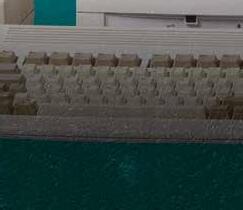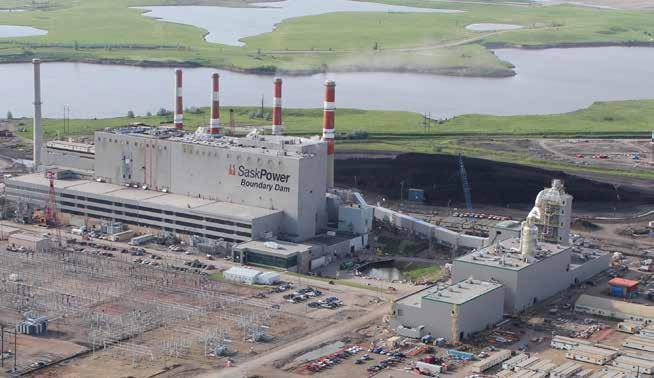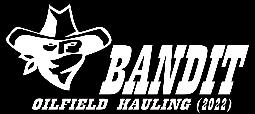
PAWS Patrol meets with young fans on Family Day
Members of the PAW Patrol receive tenative high-fives from their youngest fans, while attending Family Day activities at the Weyburn Credit Union Spark Centre on Monday.


Members of the PAW Patrol receive tenative high-fives from their youngest fans, while attending Family Day activities at the Weyburn Credit Union Spark Centre on Monday.
By Norm Park, Contracted Reporter for SECPSD
It’s no mean feat to carry a duel portfolio that requires overseeing sundry items and personnel within the South East Cornerstone Public School Division.
But, Andy Dobson, who has been enmeshed in these details since joining the division first as Facilities Manager and then later as the manager of both Transportation and Facilities, has managed to co-ordinate and deliver a plethora of now well-managed projects and programs due to the efforts of a well trained and deployed team of professionals.
Dobson described the Cornerstone situation with facilities as “chaotic” when he first came aboard in 2007 but “we have come a long way,” he suggested.
Dobson was in the boardroom on Feb. 12 to deliver an annual update on facilities in the Cornerstone family, and near the
end of his presentation, he included some additional information on transportation issues as well.
Focusing on the facilities though, Dobson said it has been a rough winter but the various school facilities were holding up to the challenges with their heating systems.
A huge challenge regarding roofing and re-roofing of various schools and other buildings in Cornerstone has now been reduced to a regular, anticipated flow to the point that only a few roofing jobs are now being budgeted each year.
On the caretaking side of the facilities file, Dobson noted there are 35 schools, the division office and the Estevan, Weyburn, and Moosomin transportation shops to care for and maintain. There are 63 full time equivalent caretaking positions to fill consistently, currently being carried out by 76 caretakers on call and scheduled.
Recent caretaking challenges have included recruitment concerns plus ice clearing processes following various weather conditions.
Marlin Maas, the caretaking supervisor made those observations that were included in the Dobson report.
On the operations side there are services required for a total of 49 buildings, since there are six shops, six teacherages plus the head office to take care of during the year. This takes up time for a team of electricians, facility carpenters, journeymen and foremen and technicians among others.
Add on the need to oversee 157 regular bus routes that engage 198 school buses that have to be maintained and safely deployed but also 55 fleet vehicles that require regular attention, and you have an impressive list of “must do” projects that never end.
Andy Verhaeghe, the transportation supervisor
reported that cameras have been installed in all new buses since 2019 and that is beneficial during investigations. Dobson noted there were 11 open runs without drivers at the start of the year, there are now just six with 12 new drivers now engaged.
Dobson provided a recent update on the progress of the planning for a new $38.6 million school to be built in Carlyle following a $4.2 addition of funds from the Town of Carlyle to add more features to the original plans. Those new plans from Number 10 Architects of Winnipeg who are overseeing the K-12 new school project, were briefly made available for viewing by the board members.
The new plans now include a larger main gymnasium that adds 150 square metres plus a mini-gym at 268 sq.m. and home economics and professional space that adds a further 150 sq.m and that leads to addi-
tional ancillary space and changes in original plans, he pointed out.
Dobson also pointed out there is a sub-division of properties for childcare expansion at MacLeod Elementary school in Moosomin and Hillcrest School in Estevan.
He displayed photographic results of the recent upgrade of the Home Economics laboratory at McNaughton High School in Moosomin that was carried out using their own personnel which came in at a cost of $254,000, which Dobson speculated would have cost much more if the task had been contracted to a construction company.
A relocatable classroom was completed and put in place at Assiniboia Park Elementary School in Weyburn that was done by the Cornerstone team for a total cost savings of $255,000. That project came with a $600,000 grant from the Education Ministry.
Jim Swyryda, the operations supervisor had reported to Dobson that LED lighting upgrades are nearing completion with 30 of the 35 schools now using the newer systems that reduce service calls and add years to the life cycles of fixtures. The final schools destined for the upgrades are in Alameda, Macoun, Manor, Pangman and Wapella and the project will be completed by August of this year. Macoun School also received a heating system replacement where an older steam boiler was replaced by seven forced air furnaces.
Swyryda and Dobson also noted that two of their staff members are now certified for pesticide applications that will save the division another estimated $55,000. It was reported that preventative maintenance scheduling is working well as service requests are down by 12 per cent from the last school year.
The Weyburn Wheatland Seniors Centre held a variety of games during the week of Feb. 10 to 14, with the following results.
The winners of Spades on Feb. 10 were Stan Hubick in first, Sheila Greiner in second, and Kim Bent in third.
In Kaiser on Feb. 11, first went to Theresa Istace and Jean Fahlman; second was Marie Marcotte and Eva Morley; and third was Jean Knibbs and Betty Knibbs.
The winners of Canasta on Feb. 12 were Ione Schell in first; Pat Peterson in second; Marge Warnke in third; Trina Maas in fourth; and Elaine Frasz in fifth.
In Hi-Low Whist on Feb. 12, first went to Marge Schultz and Fay Pohl; second was Dave Frayn and Brenda Paul; third was Marie Marcotte and Ruth Boren; and fourth was Elaine Frasz and Sheila Wendel.
The winners of Thursday crib on Feb. 13 were Garth White and Marlene

Szczecinski in first; Shirley Hubbs and Doreen Knibbs in second; and Marge Schultz and Fay Johnson in third;
In bridge held on Feb. 14, Erskine Sandiford won first, Dave Creurer came second, Stan Hubick placed third, and Cristine Herlick were fourth.
A cribbage tournament was held on Feb. 8, with nine tables competing. Cold weather and a recent snowfall prevented out-oftown participation.
The winners were, in first place, Rod Callan and Larry Szczecinski; in second, Elaine Frasz and Theresa Istace; and in third, Marge Schultz and Fay Johnson.
The next tournament at Wheatland will be on March 8, but organizers encourages every to try out a fun crib competition on Feb. 11.
There will be a potluck lunch from noon to 1 p.m., and regular play starts at 1 p.m. No partner is required, and the cost is $5 per person.

Learning about the history of the Canadian Flag
Grade 6 student, Huntley, points out Canadian Flag acts to Grade 4 student, Gleb, and answers a few of his questions about the display. A Heritage Fair was held by Grade 4 to 6 students at Assiniboia Park Elementary on February 13.
The Government of Saskatchewan’s strategy to increase the health care workforce is showing results. Health care staffing numbers in Saskatchewan










rank higher than the fiveyear national and western Canadian average in several key categories, as recently released by the Canadian Institute for Health Information (CIHI) and other sources.
“There are many reasons for Saskatchewan residents to have confidence, as we strive to ensure our province is a desired place for healthcare professionals to work and build a career,” said Health Minister Jeremy Cockrill. “As we train and recruit more staff to work here, we continue building capacity that meets or exceeds regional and national levels.”
professionals per 100,000 people was higher than both the Western Canadian and Canadian averages of 1,188 and 1,192 respectively. Over the past five years, Saskatchewan has added 1,056 more nursing professionals to its workforce, or a 6.7 per cent increase.
Saskatchewan’s Registered Nurses (RN) rates per 100,000 residents rose to 973 in 2023, up from 940 in 2019, a 3.5 per cent increase. The 2023 per capita RN numbers are considerably higher than the national average of 803, and the western average of 810.




Saskatchewan that show a nearly 18 per cent increase in licensed RNs between 2018 and 2023. We are also seeing a per capita increase in Saskatchewan’s Licensed Practical Nurses (LPNs) from 318 in 2019 to 324 in 2023, a rate that is expected to grow even further with recent increases in training capacity. Saskatchewan’s 2023 per capita LPNs is also above the western Canadian average of 309. Provincial data shows nursing training and recruitment efforts are working. From December 2022 to June 2024, the Saskatchewan Health Authority has hired more than 1,400 in-and-out-ofprovince nursing graduates.













According to CIHI’s Health Workforce in Canada Overview, Saskatchewan had the highest per capita numbers of regulated nursing professionals in western Canada every year between 2019 and 2023. Saskatchewan’s 2023 rate of 1,384 nursing
Saskatchewan is continuing work to increase those rates by adding capacity in training programs, and targeted efforts in recruitment programs. These per capita rates from CIHI are validated by licensing numbers published by the College of Registered Nurses of
CIHI’s release also reports that in 2023, there were 200 paramedics in Saskatchewan per 100,000, a 19.5 per cent increase from 2019. That 2023 rate for Saskatchewan led all western provinces and was more than double the national average.



In addition, incentive programs geared to attract physician specialists to Saskatchewan is showing results. Over the past five years, rates increased by 7.1 per cent to 103.1 per 100,000. More can be expected through an increase in residency seats, as well as incentive programs offering up to $200,000 to new physicians practicing in qualifying communities.













By Alex McNichol
Construction projects play an important role in driving lasting economic growth and development – so important in these uncertain times.
While there’s not a long list of projects built in Canada in recent years, one good example is Enbridge’s Line 3 pipeline replacement project. A large piece of that work took place near Weyburn.
Since 2020, the first full year after completion this work has generated more than $6 million annually in property tax payments, after tallying about $190 million in tax revenues during construction. Yes, those are just Saskatchewan numbers.
Enbridge’s proposed Seven Stars Energy Project is not on the same scale and will not have the economic impact of a $5-billion-plus pipeline project. However, it’s worth noting the economic benefits from this 200-megawatt wind energy development would be concentrated in a much smaller area – within the RM of Weyburn, RM of Griffin and City of Weyburn.
The Seven Stars project construction would occur over two years (spring to fall in both 2026 and 2027), with an average workforce of 100 people, including local hires. There will be no camp associated with the project, so workers will need to source food, lodging, and other services
locally.
Labour spending is estimated at $75 million and we’ve identified many categories of services we’ll need to contract, providing opportunity for Weyburn-area businesses.
Once the Seven Stars project is up and running, the benefits really start to add up. Over a 30-year lifespan, the project is expected to generate more than $100 million ($3.4 million to $4 million annually) in local economic benefits, including approximately $25 million ($800,000 annually) to the RM of Weyburn, RM of Griffin and for provincial education taxes, beginning in 2028.
Rounding out this picture are lease payments to landowners in the project area, local Enbridge employee salaries, outsourced contracting to maintain a purpose-built office and warehouse, and a fund to support community-driven programs and initiatives.
At Enbridge, we’ve seen first-hand the benefits projects like this can bring to a region when they are developed collaboratively with landowners, local governments and other interested parties. That’s why we’re taking plenty of time to listen to residents, answer questions and address concerns.
Input received has led to project enhancements such as:
• a new turbine layout, with wind turbines
ClicktheSoutheastcategory,andbookmarktheWeyburnReview



located further from residences and property lines of non-participating landowners, to align with local zoning bylaws;
• moving eight turbines from the RM of Weyburn to a more remote area in the RM of Griffin;
• offering Neighbour Agreements to some landowners who wouldn’t otherwise benefit financially from the project.
We’re encouraged by the progress we’ve made and are hearing that the broader sentiment in the community is one of optimism and support, but we understand we’ve still got work to do to get the details of this project right. The real test of that is a robust provincial environmental process which includes another opportunity for public input.
In the meantime, we’re hearing from businesses eager to work with Enbridge in providing the products and services needed to bring the project to fruition. We’ve been reaching out to local nonprofit organizations to identify community needs and opportunities for financial support.
And, yes, we’re hearing from residents who welcome further economic diversification and a substantial investment in the “Opportunity City” that will help to build long-term prosperity.
Alex McNichol is a Director of Power Business Development with Enbridge
Minister of Trade and Export Development Warren Kaeding is leading a delegation to Vietnam and Singapore to maintain and grow trade opportunities, increase investment attraction, encourage collaboration in higher education, and showcase Saskatchewan’s capacity to support nations around the world to meet food and energy security needs. A portion of the mission will also be dedicated to labour and immigration recruitment efforts.
“Vietnam and Singapore are two vitally important markets for Saskatchewan as we continue to build relationships abroad,” Minister Kaeding said. “The ASEAN region is an area where we’ve seen rapid growth, and we want to continue to build on that positive momentum. Strengthening international trade relationships and diversifying our export markets are more important than ever as we look to promote our sustainable food and energy security to the world.”
The mission will cover many of Saskatchewan’s main sectors, including mining, critical minerals, energy, and agri-value.
One of the highlights of the mission will
be attending the Canada in Asia Conference. The conference brings together key stakeholders and decision makers from across Canada and Asia for discussions and sessions on agri-foods, food security, clean technology, and energy transitions.
Provincial exports to the ASEAN region totaled $1.5 billion in 2024. Of that, $130.6 million and $10.3 million worth of goods were exported to Vietnam and Singapore respectively.
Saskatchewan currently operates trade and investment offices in both Vietnam and Singapore. Saskatchewan’s trade offices work with industry partners and support the province’s engagement efforts across the ASEAN region.
Last year, the Government of Saskatchewan unveiled its new Securing the Next Decade of Growth - Saskatchewan’s Investment Attraction Strategy. This strategy combined with Saskatchewan’s trade and investment website, InvestSK.ca, contains helpful information for potential markets and solidifies the province as the best place to do business in Canada.
For more information visit: InvestSK.ca.

The Weyburn Comp Eagles Senior Girls basketball team cheered on the boys as they led in the final moments of their McLeod Series game on Wednesday evening. The boys won their game 80-75, but the girls lost their match 72-44.
The Weyburn Gold Wings won both of their home games over the weekend, as they blanked the Regina Rebels 4-0 on Sunday night, and 3-2 over Swift Current on Saturday.
In Sunday’s win, there were no goals in the first period, then Weyburn’s Jade Olszewski scored in the second, assisted by Nola Exner and Liv Peck.
The Gold Wings domin-
ated the third period with three more goals, the first by Peck, assisted by Exner and Olszewski.
Julia Durr scored from Hallie Parada, and Kadence added an emptynetter, assisted by Kiah Shields.
Goaltender Amy Swayze earned the shutout, stopping all 16 shots on net.
In Saturday’s win over
the Wildcats, Weyburn opened the scoring with Dansereau getting the first goal unassisted in the first period.
Shields added to the score in the second period, assisted by Dansereau in the second period, then Exner scored from Makenna Sumners and Liv Peck.
Swift Current tried a comeback with two goals,
but the Gold Wings hung on for the win.
Swayze was again in net for the entire game, making 28 saves on 30 shots by the Wildcats.
The Gold Wings will again host two home games this weekend, as the Saskatoon Stars come to Weyburn on Saturday, Feb. 22 at 7 p.m., and Sunday, Feb. 23 at 2 p.m., both at Crescent Point Place.
The Weyburn Red Wings added two “W’s to their standings over the weekend, with a close 1-0 win over Nipawin on Friday, then a Family Day victory over Estevan by the score of 6-3.
The rare matinee game on Monday was also Alumni Day for the Red Wings, as they welcomed many past players to come and watch, with 1,355 people filling the stands.
The game began with an Estevan goal 22 seconds in, but the Red Wings responded with three goals to round out the first period.
Jaxson Ruthven first scored, assisted by Chad Lebeau, followed by Liam Fitzgerald, assisted by Jerome Maharaj and Cyprus Smith-Davis, then Luke Schraeder scored, assisted by Josh Karman and Maharaj.
The Bruins scored twice in the second per-
iod, with Weyburn’s Max Chakrabarti scoring in between, assisted by Simon Martin and Ethan Dekay.
The Red Wings rounded out the scoring in the third with Smith-Davis finding the back of the net, assisted by Fitzgerald and Martin, then Braigh LeGrandeur got the final goal, assisted by Matthew Edwards.
Angelo Zol was in net for the game, making 27 saves on 30 shots by the Bruins.
In Friday night’s game in Nipawin, the lone goal was scored midway through the first period by Karman, assisted by Ethan Dekay and Ruthven.
Zol was in net for the game, earning the shutout victory by stopping all 21 shots.
The next home game for the Red Wings will be hosting the Nipawin Hawks on Friday, Feb. 21 at Crescent Point Place.



Several non-profit organizations received funding grants from the OTS Bonspiel, awarded during the opening ceremonies held at the Weyburn Curling Rink on January 31. From left: True Grit Award winner Kristin Loroff who received $500; the Salvation Army Food bank received $5,000, accepted by board member Andria Brady; Tatagwa Kidz Care received $500, accepted by Cora-Lynn Sexton, executive director and Kelly Kekich, board member; Radville Community Grown Childcare received $500, accepted by Amy Poppe; and Junior Curling received $1,000, and was accepted by board member, Lianne Cretin.
Three additional energy companies are partnering with Saskatchewan Distance Learning Centre (Sask DLC) and Teine Energy to support the creation of new online oil and gas high school courses with work placements.
Cenovus Energy, Vermilion Energy and Whitecap Resources have joined Teine Energy’s commitment to provide support and industry expertise to Sask DLC’s development of new Energy and Mines - Oil & Gas 20 and 30-level online courses.
The four energy companies, each with operations in the province, are providing a combined total of up to $160,000 over two years to support the creation of the new courses and to fund a coordinator
position to facilitate student work placements and industry engagement opportunities.
Starting in Semester 2 of this school year, students will be taking Energy and Mines - Oil & Gas 20 as part of the pilot of this new online course with work placements. Energy and Mines - Oil & Gas 30 will be available to students starting in the 2025-26 school year.
matched with the work placement required for course completion.
These new online courses are based on the Ministry of Education’s existing Energy and Mines curriculum and are available to full-time Sask DLC students or high school students attending local schools throughout the province, to supplement their in-person learning.
to gain an understanding about the oil and gas sector that provides economic prosperity and energy security to the Province of Saskatchewan and the entire country, and in turn, further economic security of individuals who choose to work in the industry,” Whitecap Resources President and CEO Grant Fagerheim said.
minds and workers driving their own success and sharing the prosperity across our communities.”
The four companies also have the opportunity to provide a representative to the steering committee that is providing valuable industry feedback to the Sask DLC course developers currently creating these new online courses.
In the 20 and 30-level elective courses, students will take 50 hours of online theory to learn about the industry, safety and career paths available to them as well as 50 hours of hands-on learning through an industry work placement. Registration for these classes is limited to ensure all students are
Beyond the financial support of the course development, Teine Energy and Whitecap Resources have also agreed to host student work placement hours at their locations throughout Saskatchewan to supplement student learning.
“Whitecap Resources is very pleased to support this initiative, which will give students an opportunity


“Teine looks forward to continued collaboration with Sask DLC on the Oil and Gas program and providing opportunities to students with hands-on experience within our field operations,” Teine Energy Vice-President of Production and Operations Tyler Homan said. “The future of our Canadian industry and energy economy relies on bright and talented young
“Cenovus relies on the ingenuity and talent of our people to drive our success,” Cenovus Energy Vice-President, Lloyd Thermal and Conventional Heavy Oil Operations
Nicolas Zaher said. “By providing students with accessible courses, Sask DLC is developing a strong pipeline of talent for our company, equipped to take on the energy jobs of today

and tomorrow and advance our industry in this important region.”
“At Vermilion, our people are our strength,” Vermilion Energy Inc. President and CEO Dion Hatcher said. “That is why we are excited to work on this collaborative initiative to help students gain valuable skills to help them find a fulfilling career in the energy industry.”
These new courses complement similar hands-on learning and work placement opportunities available to students through Sask DLC, including Agriculture Equipment Technician; Autobody; Construction and Carpentry; Electrical; Mechanical & Automotive; Parts Technician; Power Engineering; Precision Agriculture; Tourism, and Welding. Southeast Saskatchewan Oil Industry Update



A total of 24 teams competed in the 66th Weyburn Oilmen’s Bonspiel held at the Weyburn Curling Rink.
The Government of Saskatchewan’s second subsurface mineral public offering of the fiscal year, held on Monday, November 25, 2024, raised $2,270,322.67 in revenue, driven by interest in lithium.
Of the 13 subsurface permits posted for this offering, 12 received bids for a total area covering 22,922.229 hectares. Ten of the permits are prospective for lithium in brine while two are prospective for potash.
Millennium Land Ltd. made the highest bid, $909,356.61 for a 3,914.410 hectare permit block located north of Stoughton. The company also had the winning bid, $550,018.00, for a second
permit block totalling 2,369.031 hectares north of Kisbey. Both permit blocks are prospective for lithium in brine.
Hub City Lithium Corp. acquired two permits southwest of Stoughton totalling 1,405.403 hectares with a $354,161.53 bid. These permits are also prospective for lithium in brine.
One potash permit is in the Tuxford area and was awarded to Upcycle Minerals Inc., which bid $10,200 on the 4,275.594 hectare block. The second is near Davidson and was awarded to Sun Valley Land Ltd., which offered $9,937.00 for the 6,288.726 hectare block.
The November subsurface mineral offering is
the second of three public offerings scheduled for the 2024-25 fiscal year.
Of note, due to the fact the February 10, 2025, offering received no posting requests, it has been cancelled.
Through two such offerings this fiscal year, the Ministry of Energy and Resources has raised $8,205,749.13, up from the $1,459,502.41 through the one public offering held last fiscal year.
Lithium is one of the 27 critical minerals occurring in Saskatchewan that will play a key role in the province achieving the goals set out in Saskatchewan’s Critical Minerals Strategy. Several firms are actively pursuing lithium explora -

A total of 24 Weyburn and area oil company teams took part in the 66th Weyburn Oilmens Bonspiel over the January 31 and February 1 weekend at the Weyburn Curling Club, and the following are the event winning teams.
For the A Event, sponsored by Spearing Services, the winner was StreamTech, including Steven Hansen, Nichol Thomson, Jeff Lunde and Adrian
Miller.
The B event, sponsored by Jerry Mainil Ltd., was won by Team Vortex Plumbing & Heating, including Ryan Skjerdal, Tanner Wallin, Byron Skjerdal and Graham Schmidt.
The C Event, sponsored by John Kmita Ltd., was won by the team from DK Energy #1, including Danette Tracey, Darren Woodard, Brittni Skjerdal and Lianne Cretin.


The provincial government’s Crown oil and gas public offering, held on Feb. 4, raised a total of $3,039,589, for the province, with the southeast area generating most of that total.
Provincially, there were 29 parcels were put up for bid in this offering, and 25 parcels received acceptable bids, covering an area of 2,753.836 hectares.
The Weyburn-Estevan region raised a total of $2,747,969 for 16 leases covering 1,684.452 hectares.
Millennium Lands (111) Ltd. made the highest bonus bid and dollars-perhectare bid of $997,962, an average of $6,158 per hectare, for a 162.045-ha lease located 13 km northeast of Midale, within the Midale Central Frobisher Beds Oil Pool.
Synergy Land Services Ltd. was awarded a 710.727-ha lease after bidding $503,031, an average of $707.77 per hectare. This lease is located nine km southwest of Gains -
borough, adjacent to the Gainsborough West Frobisher Beds Oil Pool.
Two leases were awarded to Baserado Resources Ltd. and Hummingbird Energy Ltd., who submitted joint bids on each lease.
One lease, totaling 64.58 hectares, is located four km south of Carnduff, and received a bid of $325,000, an average of $5,032 per hectare.
The second lease, totaling 64.666 hectares, is located four km southwest of Carnduff, and also received a bid of $325,000, an average of $5,025 per hectare. Both leases are near the boundary of the Carnduff Midale Beds Oil Pool.
This is the sixth and final oil and gas public offering for the 2024-25 fiscal year, over which time the government has raised $51,814,614.
Several factors affect public offering activity, including changes in oil and gas prices, land availability, geological and technological constraints and other market conditions.


Sweeping in a shot during the OTS bonspiel Teammates Karson Becker and Paige Tenbult combined their efforts to sweep this shot in, during the Weyburn OTS Bonspiel ,held at the Weyburn Curling Club.







David Willberg SaskToday.ca
The carbon capture and storage (CCS) facility at SaskPower’s Boundary Dam Power Station had its best year to date, capturing a total of 848,388 tonnes of carbon dioxide (CO2) in 2024.
The total smashed the previous record of more than 792,809 tonnes, set in 2016. The facility opened in October 2014 and celebrated its 10-year anniversary last year.
Gregg Milbrandt – the vice-president of energy transition and asset management at SaskPower, who spent nearly 25 years working at coal facilities in Estevan – said a lot of the
success at the facility is due to the staff members, who take a lot of pride in the facility and have high levels of ownership.
“It just goes to show the continuous improvement that we’ve had with the facility. We’ve focused on, first, obviously, reliability over the course of the years and making improvements along the way with regards to the systems and the processes to ensure that reliability is attained in a productive and efficient way,” he said in an interview with SaskToday.
SaskPower has also worked on process efficiency to ensure the systems are finely-tuned as much as possible to reach
the capacity of the facility and deliver maximum capture.
“I think that’s what we’ve seen over the last number of years now, where we’ve seen that steady increase, culminating in this last year with our best 12-month period in 2024,” said Milbrandt.
SaskPower has had an internal target of 800,000 tonnes captured for the facility, and it has been attained for the first time.
He’s also pleased with the consistency and the reliability, which reflects their investment into both Unit 3 and the capture island.
“We think about the two facilities together, and
those are difficult numbers to reach in a sustainable way, and I think we’ve been able to show that the last number of years that we’ve been able to run a reliable facility.”
Milbrandt said most of the time offline last year was due to a scheduled outage that occurred in September and October. Work completed during the shutdown included cleaning various sections of the CO2 and sulfur dioxide absorber towers; inspecting and cleaning the flue gas cooler; replacing the desiccant in CO2 compressor dehydrator vessels; and various mechanical equipment maintenance on pumps and more.



A much larger scheduled outage is slated for this year. Milbrandt said Unit 3 is to undergo a “major” scheduled outage every 10 years, while the CCS facility has one every five years. The 70-day shutdown is slated to begin in early April and wrap up in early-to-mid June.
During the fourth quarter of 2024, which ran from Oct. 1-Dec. 31, Unit 3 at Boundary Dam was available 78 per cent of the time and the CCS facility was accessible 75 per cent of the month, capturing 172,514 tonnes of CO2. The planned outage accounted for most of the time offline.
While online, the facility had a daily average capture rate of 2,484 tonnes in the fourth quarter, with a peak one-day capture rate of 2,773 tonnes. This resulted in an emissions intensity of 364 tonnes of carbon dioxide per gigawatt hour.
The acid plant was avail-
able only 21 per cent of the time in the fourth quarter and produced 421 tonnes of sulfuric acid (SO2) during the three months, but it still produced a record 4,427 tonnes of SO2 for the year.
Milbrandt said there is a particular system within the acid plant that requires some re-engineering.
“There is going to be some work that’s going to be taking place during the major overhaul and target on a few of the systems within the acid plant to improve those reliability numbers,” said Milbrandt.
Interim repairs are taking place on the acid plant so it can be brought back online for a while before the shutdown.
Sulfuric acid can be used in many industrial applications and be a revenue source for SaskPower.
As of the end of 2024, 6,606,728 tonnes of CO2 have been captured and kept from entering the atmosphere since the facility went online.






HIRING: Bryden Construction & Transport Co. requires SHOP LABORERS
Duties involve cleaning the shop and equipment, assisting in the service/ maintenance area, and general laborer duties. Clean driver’s abstract required. Job location is Arborfield, Sask. Room and board provided. Send resume with work references to: brydenconstruct@ xplornet.ca or fax 306-769-8844

PROVINCE-WIDE
A vacancy exists for an individual to fulfill the seasonal full-time position of labourer for the Rural Municipality of Lomond No 37. The role includes working with a maintenance workforce consisting of four other employees including the municipal Foreman The potential for permanent full-time may become available.
The R.M. of Lomond No 37 is located south of Weyburn, SK with the shop located in Goodwater, SK. The municipality has a population of 275 residents and includes a wide range of agricultural, residential, commercial, and oil & gas developments.

The position will commence on April 1st, 2025 and continue to December 31st, 2025. Work schedule is 40 hours per week with occasional overtime required.
General duties & responsibilities include but are not limited to:
- Construction and manual labour with some machinery work
- Crack sealing, mowing ditches, rock picking, culvert installation, road sign installation, snow removal, fence removal and replacement, grass seeding, and general yard and equipment maintenance
- Promote and maintain workplace safety practices at all times.





- Willing to work in a team environment
The successful candidate must possess:
- A valid class 5 driver ’s license however a Class 1A would be an asset.
- Road-building knowledge and experience is an asset.
- Road maintenance knowledge and experience in road construction.
- Ability to service and maintain equipment
- Experience with CAT grader and other heavy equipment experience is an asset.
- Ability to pass pre-employment drug testing.
Applicants are invited to submit a resume including:
- Past and present work experience.
- Education and skills
- Certifications
- Current driver ’s abstract.
- Expected Salary
- Three references
Please forward your resume via email to rm37@sasktel.net, by fax to (306) 4562440, by mail to Box 280 Weyburn, SK S4H 2K1, or in person to the Municipal Office located at 327 Railway Avenue, Goodwater, SK.
Application deadline is 3:00 pm Wednesday, March 5th, 2025. We thank all applicants, however only those selected for an interview will be contacted. Resumes will be retained on file for a period of two years.
By Sabrina Kraft Weyburn Review
The Holy Family Roman Catholic Separate School Division board had a face-to-face discussion with new MLA Mike Weger, representing Weyburn-Bengough, during their monthly meeting on February 12.
“We just wanted to invite our government people to meetings like this so we can have a discussion face-toface, so that they understand where we are firsthand and get your opinion on what you think is going on and what you’re doing,” said Bruno Tuchscherer, board chair. A number of questions were discussed with MLA Weger.
One of the topics of conversation revolved around the provincial education plan (PEP), and receiving some clarification on the province’s goals for creating a unified education plan.
“The education plan has developed a footprint on how it’s moving forward, with some pillars that they’ve identified including mental health, inspiring education, wellbeing, transitions,” said Ken Sampson, director of education for Holy Family.
“Mental health is a big one, and the need to look at that is growing, as we know. Local services in certain areas of the province seem to be kind of a
hidden mess, and particularly for rural school divisions,” added Sampson. “It’s challenging, not only to access services, but to access and retain services on a fairly regular basis.”
“On the local level, I’ve definitely heard concerns in the Weyburn and Estevan area that we need more mental health workers, and there’s a shortage and part of that is finding the people,” said MLA Weger.
“It is important for school divisions to have availability of social service people, speech therapists to come into the school,” said Tuchscherer. “The difficulties include finding the people, as other government agencies aren’t readily
wanting to work with you either, because they’ve got their own things to do. So that’s been a challenge all the way along.”
“We’ve made progress over the years, that we are now working together, but there’s still a big need for extra help. We can’t afford to hire all these people that we need for all our schools, because we can’t find them, and secondly, the money isn’t there to pay these people, but there is definitely a need for them,” added Tuchscherer.
“Our strategic plan is very much in alignment with the provincial education plan, and in turn, our schools sorting plans mirror that as well,” said Sampson.
“We do have a high priority in the division on mental health and mental health supports, and we’re continuing to grow that as much as we possibly can, and then the reach-out to community partners to make sure that kind of we’re working in tandem to be able to provide that support.”
“Part of the problems we really see in the operations of the school is education mandate and health mandate, and when the education mandate ends,” said Chad Fingler, superintendent of school operations for Holy Family. He noted that the education system is one of the only compulsory systems in the province.
“There’s lots of times where kids are coming to school with mental and
Agalume & Coloured Available Phone: 306-731-2066 Fax: 306-731-3610
vfarc@live.ca Versa Frame Inc.

Talk to us today about community-focused advertising and promotional opportunities to attract more customers to your small business! Email Andrea at acorrigan@glaciermedia.ca or Leslie at ldempsey@glaciermedia.ca

physical health issues, and those issues are being left to handle in the schools,” said Fingler. “So as we’re trying to create those partnerships, perhaps there is opportunity or conversation at the government level for the ministries of health and education to start looking at coming together to provide joint supports in the schools.”
“The schools are the place to have these people for mental health or any kind of health issues, because the students are here. It would be great if they could get the services here at the school, or get directed from here. It would be a lot simpler than trying to find an appointment someplace to get at,” said Tuchscherer.



The Water Security Agency (WSA) released the preliminary spring runoff report for 2025.
While much of Saskatchewan experienced below-normal precipitation, leading to dry conditions at freeze-up last fall, overall conditions improved compared to last year. Most major reservoirs in southern Saskatchewan are at or above normal levels and are expected to be near normal levels following spring runoff.
Winter precipitation has been variable across the province, ranging from below normal in south-central and northern Sask., to above normal in parts of the southwest and west central portions of the province.
Currently, Lake Diefenbaker, the province’s main water supply, is above normal levels for this time of year and inflows this winter have been near normal.
“In anticipation of potential below normal runoff from the alpine region, WSA has implemented an overwinter operating plan at Lake Diefenbaker that still focuses on retaining
water supplies to ensure safe, reliable drinking water for communities and other users,” said Minister Responsible for the WSA Daryl Harrison.
A more complete assessment of potential runoff conditions will be available after snowpack survey data is gathered later in February. Snowpack data, collected from over 100 locations across the province, provides a comprehensive view of moisture conditions, helping to refine runoff forecasts and water management decisions.
Parts of southern and central Saskatchewan are expected to see an above normal runoff due to an above normal snowpack in combination with wetter fall conditions.
In the Souris Basin, reservoirs are projected to remain within normal operating ranges. All lakes within the Qu’Appelle River Basin are expected to remain in the normal operating ranges.
WSA will continue to monitor and report on conditions as they develop.
Pu bl ic No ti ce is her eb y gi ve n th at no mi na ti ons of candidates for the offices of:
Councillor: R.M. of Weyburn No. 67 Division 1
wi ll be re ce iv ed by th e un de rs ig ned on th e 12t h day of Ma rc h 2025, fr om 9: 00 a. m. to 4: 00 p. m. at th e R. M. Of fice , and dur in g re gul ar bus in es s hour s on Fe br uar y 26, 2025 to Ma rc h 11 , 2025, at th e R. M. Of fice , We yb ur n, SK.
Nomination forms may be obtained at the R.M. Office
Dated this 19th day of February 2025.
Jenna Smolinski
Returning Officer






Heritage Fair display shows a love for horses
Grade 4 student, Finley, shows off her love for horses, creating an interactive display for the Heritage Fair held at Assiniboia Park Elementary School.
By Sabrina Kraft Weyburn Review
During a recent board meeting, members of the Holy Family Roman Catholic Separate School Division discussed the struggles that smaller school divisions have with the limits of the Preventive Maintenance and Repair (PMR) budget.
The board celebrated the announcement of a new portable classroom for St. Michael School. Construction of the unit will begin in July.
“We all recognize that a portable classroom is a short-term solution in some
situations, but it’s better than nothing,” said MLA Michael Weger, who was a guest at the school board meeting.
“The government does recognize that the cost of building is going up year after year after year. So this year, the funding for the portables was higher than it’s ever been in the past and they’re working really hard to try to ensure that it covers the full cost and boards don’t have to go into reserves to offset the cost,” said Chad Fingler, superintendent for school operations for Holy Family.
Fingler added that the
school division would appreciate support or any lobbying by the MLA on behalf of small school divisions. “They have the major capital grants, minor capital application grants, and the threshold for the minor capital grants at the bottom end is a million dollars. Things like roof projects and some of those things that are $600,000 to $800,000 don’t meet the minimum threshold of minor capital projects, and we are being asked to use our Preventive Maintenance and Repair (PMR), which is only $250,000.”
“So three consecutive
years of 100 per cent of our PMR money, which is meant to support all five schools, has to go into one roof project. We have nothing left to maintain the schools, and we have no access to funding any other way,” said Fingler. He wanted to know if there was a way to lobby for a sliding scale to the minor capital projects budget for smaller school divisions.
“I feel there’s an inequity in our ability to apply for the minor or major funding because of our size.”


and your name Your pictures could very well be chosen for our next edition of ON THE FARM! Please send photos as a high resolution jpg or pdf.





In the last five years, Holy Family had to commit to roofing projects at St. Mary’s School, Sacred Heart School and St. Augustine School. “That’s almost $1.5 to $1.6 million of roofs on a $250,000 PMR budget per year. It’s hard,” said Fingler.
“Our schools are all old, so they cost a lot of money to keep going,” said Bruno Tuchscherer, board chair for Holy Family.
There is a proposed major project on the horizon for Holy Family in partnership with Southeast Cornerstone Public School Division, for a capital project in Estevan. The proposed joint-school program would house students from three Cornerstone schools and two Holy Family schools in the same building.
“It would be a costsaving project in the end, because we would not be fixing old schools all the time,” added Tuchscherer.